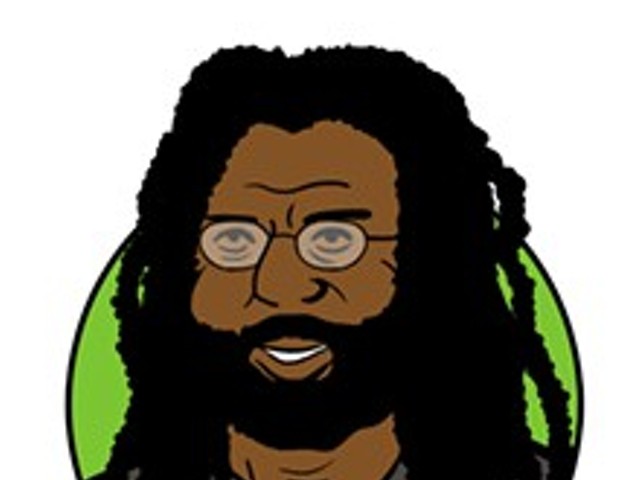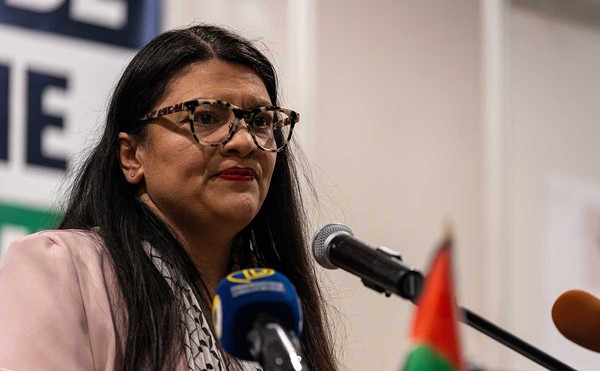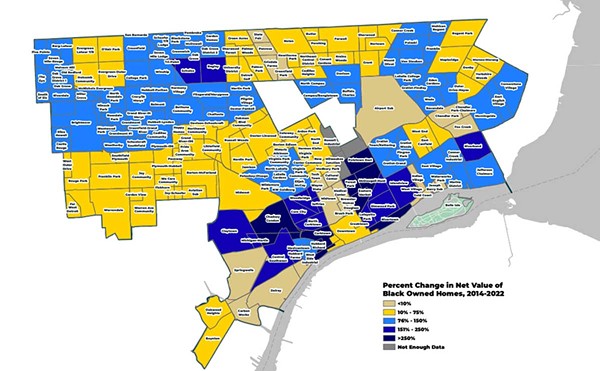Nationally, gay neighborhoods often serve as catalysts for urban redevelopment, leading the urbanist Richard Florida to call gays and lesbians the "canaries of the creative economy." In 2013, Curtis Lipscomb, who heads up the nonprofit group LGBT Detroit (formerly known as Kick), spoke to Slate about his intentions to create a planned gayborhood in Detroit, anchored by a new office and community center. Since we haven't heard any public developments on the project, we met Lipscomb at his Midtown office to learn more. While he wouldn't spill any beans about the proposed location, he did say his group plans on making a decision this year.
Metro Times: When you think of the biggest gay communities in the country, Detroit doesn't come to mind. I know we had Palmer Park back in the '60s and '70s, and that energy kind of moved north to Ferndale, but today we don't really have a gay neighborhood..
Curtis Lipscomb: Though the larger, dominant gay and lesbian movement moved above Eight Mile, there was still a gay and lesbian community here. It did not leave. I know it did not leave, because I am a product of that environment. When I came out in 1980, there was a flourishing gay community here. You still had a gay and lesbian community, they were just African-American. And of course, Africans being a socially conservative group of people, they're going to operate differently than my brothers and sisters who are white.
MT: With the African-American community being more socially conservative, do you feel that that makes visibility of the gay community in Detroit a challenge?
Lipscomb: If you lived in the late '70s, early '80s — where the largest institution that people recognized in black culture was the church — you had many people make a decision not to express themselves openly. The other big thing was the AIDS epidemic — it wiped the gay and lesbian community out. Life changed from the "free, be me" culture of the '70s to this frightening new epidemic that wiped out a whole community. You have people like me who were very young in that period who recall those days, and have to re-strategize how to organize. We became not just a gay and lesbian cultural developmental community, but a health crisis community trying to wipe out this deadly disease that we still have. This impacts black gay youth right now. For blacks, the epidemic is still a huge killer in the gay male community.
MT: When did the idea start to come about to create a new gay neighborhood in Detroit?
Lipscomb: There always has been a gay neighborhood. We culturally identify our gay neighborhood as Woodward and Six Mile. Menjo's is still there. Before there was Madonna, there was Menjo's. And there were other institutions like that. Palmer Park made it so that there was an attractive place for young couples to move into an apartment, land, and flourish. Times changed. That neighborhood looks more like the rest of Detroit.
People are interested in the development of the park, our group being one of them. We know that a safe space to organize and to develop culture is still a good idea. We initiated that conversation. My program coordinator brought that to the attention of myself and the former city councilman, Charles Pugh, who then convened with us and others like people from Detroit economic organizations. We sent a poll out to the community asking if they were interested in this concept. And the community responded and gave us seven locations where they could imagine the neighborhood. Unfortunately, around the time of the development, Pugh left his office. That led this office to take up the mantle for this space.
MT: Where are you looking right now?
Lipscomb: We've been looking at properties since 2014. We have this year identified two strong potential locations where we think we might land, and I'm excited. We put a bid on the site, and we are waiting for a response from the landowner. Once we get that finalized, this new location is the beginning of that conversation. What is it to have a gay and lesbian presence in Detroit? You have to be a community player. You have to work with businesses and neighborhood associations. You have to work with block clubs. The good news is that I'm the block club president of where I live out on the west side, so I'm very familiar with neighborhood development. I run a gay and lesbian center in the city. I run the second oldest black, gay, and lesbian pride in the nation, Hotter Than July. And I grew up here. I've been here for a very long time. So this is more than a job to me. It benefits me personally, professionally, and it benefits the people that I serve.
MT: Is it somewhat unprecedented to create a planned gay neighborhood? It seems like they usually develop more organically.
Lipscomb: Most neighborhoods are accidentally discovered. The men on the docks, when approaching Manhattan, gathered along the bars on the Hudson River and because it was on the outskirts of town it was safe to gather. Those bars became what we know of as Christopher Street, this seedy place on the edge of town. The Castro (in San Francisco) was a neighborhood that nobody cared about, where the hippies hung out. Who were those hippies? Some of them were gay. To have a pole and put it in the ground and say, "This is where we're gonna land!" — it doesn't happen like that. Getting a community organized around a concept or an idea is not like that. You have a thought about the gayborhood, but what it really is is about building an institution and making sure it lands at a place where it will prosper.
Learn more about LGBT Detroit at lgbtdetroit.org.






